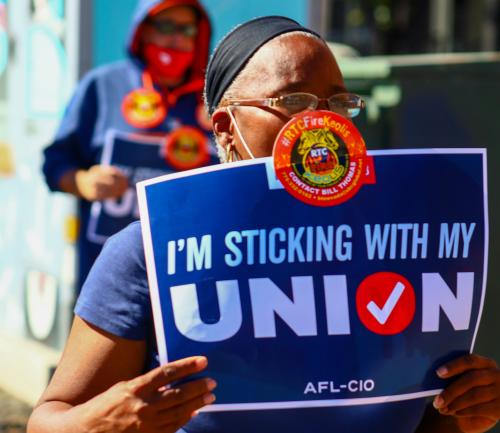Investors’ approach to say on pay is maturing as they take a more in-depth look at relevant metrics, according to Don Delves, executive compensation practice leader for North America at Willis Towers Watson.
‘We’re seeing investors and ISS taking a more serious look at what a company’s performance measures are and how it sets its goals,’ he says. ‘We believe that’s the cutting edge. Companies can do a more sophisticated job of choosing and setting goals.’
Delves says there’s a movement away from looking at relative total shareholder returns as the most important metric, because ‘there’s a strong argument that it’s a result… it’s an output not an input.’ Instead, companies should look to draw a correlation between their executive compensation plans and their long-term strategy, he adds.
‘We generally encourage our clients to pick performance measures that are highly reflective of their business model and their strategy in terms of where they’re trying to go as a company,’ Delves continues. ‘You should be able to articulate your purpose, your strategy, how you create value for shareholders and how you’re measuring what you’re measuring.’
This year marks a three-year high in ISS serving ‘high’ levels of concern about pay-for-performance metrics, according to Willis Towers Watson’s analysis. The number one issue driving these concerns is a lack of rigor in incentive plan metrics. These metrics and how they’re communicated are more important to investors than substantial compensation increases or a majority of long-term incentives not being performance-related.
The number of companies facing failed say-on-pay votes so far this year is up considerably on last year. Forty-nine companies in the Russell 3000 have faced failed votes in 2018 so far, compared with 34 companies in all of 2017, according to analysis from Willis Towers Watson. Thirty-three of this year’s companies are small or micro-caps, which may not have the resources to enhance proxy statements and engage large swathes of the investor base.
ROLE OF THE COMPENSATION COMMITTEE
Another sign the say-on-pay conversation is evolving is the targeting of compensation committee members at companies that have previously lost say-on-pay votes.
Twenty percent of companies that faced a negative recommendation from ISS on their executive pay also had a withhold recommendation for the nomination of its compensation committee members. The main reason for the withhold recommendation is a lack of responsiveness to previous say-on-pay recommendations and results. ‘It’s something compensation committee members are taking very seriously,’ Delves says.
He adds that one of the biggest emerging trends he sees is compensation committees eyeing a broader mandate: ‘Many of our compensation committee clients are asking broader questions about topics like gender pay equity, median worker pay, diversity and inclusion issues, and general workforce issues.’
One of the driving factors for this change is the CEO pay ratio requirement, which started this year. Although the ratio itself has been greeted with little media and investor interest – and ‘a big sigh of relief that it wasn’t a bigger deal,’ Delves says – it has raised the visibility of human capital issues.
Coupled with the calls from passive investors such as BlackRock, State Street and Vanguard to focus on human capital issues, some compensation committees have shown an interest in reflecting on the CEO pay ratio and what it means for the broader company.
‘This focus on the demographics of the workforce is relatively new,’ Delves says. ‘Historically, compensation committees have kept their eye on executive compensation and little else. But as boards become more diverse, we will see a more diverse range of questions being asked.’









